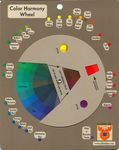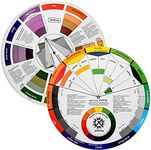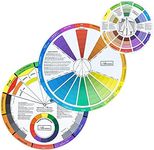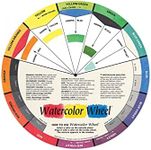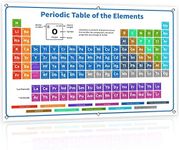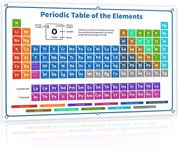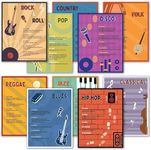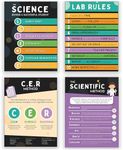Buying Guide for the Best Color Wheels
Choosing the right color wheel can make a big difference in how easily you can understand and work with color relationships, whether you're an artist, designer, or hobbyist. The best color wheel for you will depend on how you plan to use it, your level of experience, and the features that will help you most. By understanding the key aspects of color wheels, you can select one that fits your needs and helps you achieve your creative goals.SizeThe size of a color wheel refers to its physical dimensions, usually measured in inches or centimeters. A larger color wheel can display more information and is easier to read, making it great for classroom or studio use. Smaller color wheels are more portable and convenient for travel or quick reference. If you plan to use your color wheel at a desk or in a fixed space, a larger one might be best. If you need to carry it around or use it on the go, a compact size will be more practical.
MaterialColor wheels are made from different materials, such as paper, cardboard, or plastic. Paper and cardboard wheels are lightweight and affordable, but they may not last as long, especially with frequent use. Plastic color wheels are more durable and resistant to wear and tear, making them a good choice for long-term or heavy use. If you need something sturdy that will last, go for a plastic wheel. If you only need it occasionally or want something lightweight, paper or cardboard may be enough.
Type of Color WheelThere are basic color wheels that show primary, secondary, and tertiary colors, and there are more advanced wheels that include tints, shades, tones, and color harmonies. Some wheels are double-sided or have rotating parts to help you explore color mixing and relationships. Beginners may find a simple wheel easier to understand, while more advanced users might benefit from a wheel with extra features. Think about your experience level and what you want to learn or do with the wheel when choosing the type.
Information DisplayedSome color wheels show just the basic colors, while others include information like complementary colors, color schemes, and mixing guides. The more information a wheel provides, the more useful it can be for learning and reference, but it can also be more crowded and harder to read. If you want a quick reference, a simple wheel may be best. If you want to study color theory in depth or need help with color mixing, look for a wheel with more detailed information.
Ease of UseEase of use refers to how simple it is to read and understand the color wheel. Some wheels use clear labels, large text, and intuitive layouts, while others may be more complex or cluttered. If you are new to color theory or want something you can use quickly, choose a wheel that is straightforward and easy to interpret. If you are comfortable with more detailed information, a more complex wheel may be suitable.
